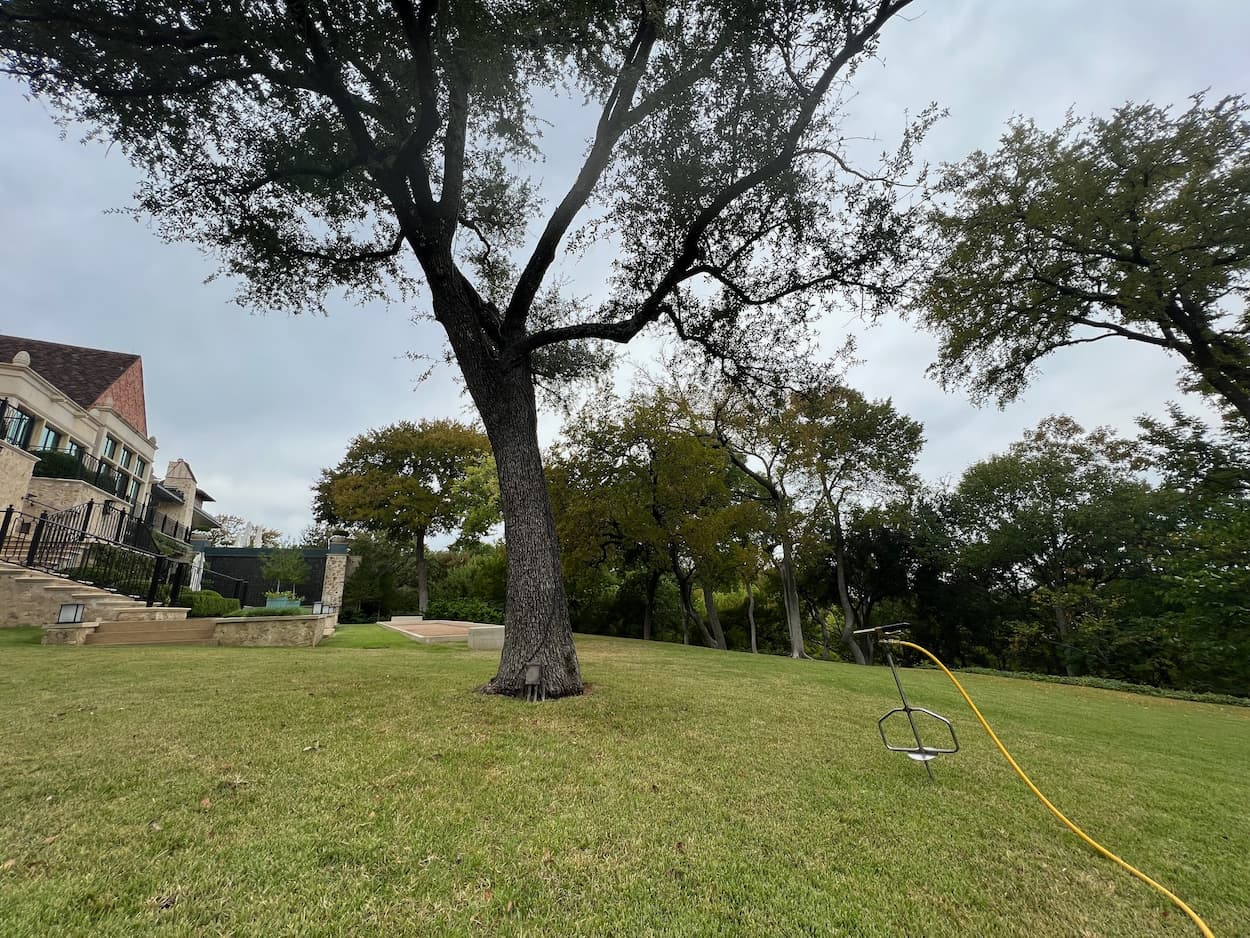Texas Shrubs & Tree Health Care Experts
Caring For Texas Shrubs & Trees Since 1990 Get A Free QuoteCall (817) 880-6130Tree & Shrub Pest Treatment Services in Cedar Hill, TX
Our ISA Certified Arborist Can Help Treat Your Trees and Shrubs From Pests in Cedar Hill, TX.
Arborist USA provides Tree & Shrub Pest Treatment Services in Cedar Hill, Texas, and the surrounding areas.
Situated in the stunning landscape of Texas, Cedar Hill boasts a wealth of trees and shrubs that contribute to its aesthetical charm. In order to maintain these natural endowments, it necessitates efficient tree and shrub pest treatments.
To conclude, the efficacious pest control of trees and shrubs in Cedar Hill, TX, incorporates strategies like swift identification of pests, expeditious treatment, expert consultation, adopting a variety of treatments, routine plant care, IPM practices, preservation of ecosystem health, active community engagement, and pest awareness education. Adherence to these guidelines ensures Cedar Hill continues to enjoy its verdant expanse and remains a haven free from destructive pests.
If you are in need of Tree & Shrub Pest Treatment Services in Cedar Hill, TX, please get in touch with Arborist USA today by calling us at (817) 880-6130, your Tree & Shrub Disease Specialist.
Signs of a Sick Tree or Sick Shrub
- Dead Branches
- Yellowing Leaves
- Fungi or Decay
- Bark Falling Off
- Discolored or Rusted Leaves
- Dying Tree or Shrub
- Leaf Discoloration
- Root or Insect Damage
- Leaves look like they’re being eaten
- Bark is Peeling
- Holes in leaves
- Holes on Bark or Branches
- Stunted Growth
- Canopy Dieback
- Bark Abnormalities
- Wilting
Tree & Shrub Helpful Tips
1. Prompt Pest Recognition:
Cedar Hill is no stranger to pests like beetles, aphids, or borers that commonly afflict trees and shrubs. Quick pest identification is essential to a successful pest management strategy, curbing their spread, and minimizing damage.
2. Signs of Infestation:
The signs of an infestation such alterations in leaf color, irregular growth patterns, premature leaf drop, or unusual bark changes should invite immediate action to halt the infestation at the earliest and commence remedial action.
3. Speedy Pest Treatment:
Upon verifying an infestation, ensuing swift treatment is paramount. This decisive action limits further infestation, lowers damage, and helps retain the scenic appeal of Cedar Hill’s landscape.
4. Expert Consultation:
Engaging competent arborists or tree care specialists can be invaluable in achieving successful pest control. From accurate pest detection to effective treatment suggestions, these experts ensure well-being of your
trees and shrubs.
5. Choosing Treatment Modalities:
The choice of treatment can be tailormade depending on the pest type and extent of infestation. Choices can include biological or chemical interventions, or physical techniques like strategic pruning.
6. Routine Plant Care:
Adopting wholesome plant care practices including appropriate watering, use of suitable fertilizers, and timely pruning can increase the resiliency of your trees and shrubs against pests and decrease infestation probabilities.
7. Adopting Integrated Pest Management (IPM):
The execution of IPM strategies provides a comprehensive, environmentally sound approach to pest control. IPM amalgamates constant monitoring, early detection, and application of biological, cultural, or mechanical pest treatments to resolve pest issues.
8. Safeguarding Ecosystem Health:
The glorious environment of Cedar Hill relies on a balanced ecosystem. Therefore, any pest control efforts should account for preserving beneficial insects and wildlife to maintain ecological harmony in Cedar Hill.
9. Community Engagement:
The community of Cedar Hill plays a significant role in maintaining successful pest control. From timely reporting of pest sightings to practicing correct plant care, community actions contribute positively to the town’s overall pest management endeavors.
10. Promoting Awareness and Education:
Spreading awareness and educating the community about common pests, indicators of infestation, prevention measures, and treatment options empowers everyone to play an active role in maintaining the health of Cedar Hill’s trees and shrubs.
If you’re concerned or have any further questions about our Tree & Shrub Pest Treatment Services in Cedar Hill, TX, or surrounding areas in North Texas, please call us at (817) 880-6130.
Tree & Shrub Pests
Listed below are common Tree & Shrub Pests found in Texas.
Aphids
A white soft body insect that creates a sticky "honey dew" structure on limbs or leaves, blocking nutrients.
Bagworms
Bagworms lay eggs that create small cone-shaped structures less than three inches in length.
Beetles
An invasive wood borer that is subject in all wood tissue that causes severe decline in trees health.
Gypsy Moth
A larva that boars into leaf structure that cause lesser of a foliation and decline in overall leaf structure.
Oak Gall
A growth deformity known as a "gall" commonly occur on oak trees subject to branches and other structures.
Termites
Termites, wood-destroying insect, eats away at all wood tissue, damaging the structures of the trees.
Twig Girdlers
Being a member of the long-horned beetle family, these girdlers are known to eat leaf and other tree areas.
Webworms
These caterpillars spin white webbing bag nests in tree branches and eat your tree foliage (leaves).
Certifications




Our Reviews

A+ BBB Rating based on 31 BBB Reviews
4.8/5.0 based on 83 Top Rated Local Reviews
4.6/5.0 based on 36 Facebook Reviews
4.0/5.0 based on 4 Trust Pilot Reviews

4.9/5.0 based on 90 Google Reviews
4.5/5.0 based on 13 Yelp Reviews
29 Recommendations on Nextdoor
Total Reviews: 286 ![]() Real Customer Reviews
Real Customer Reviews







